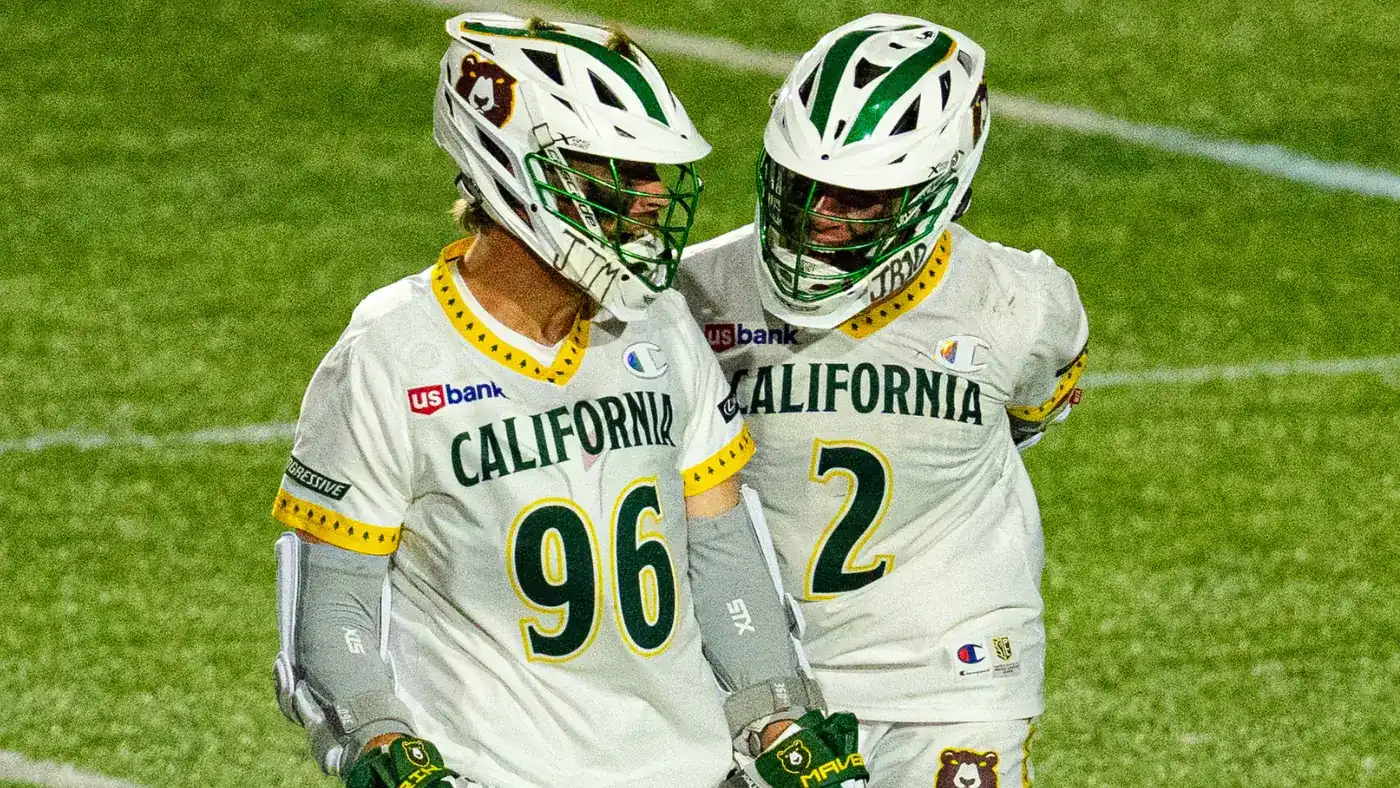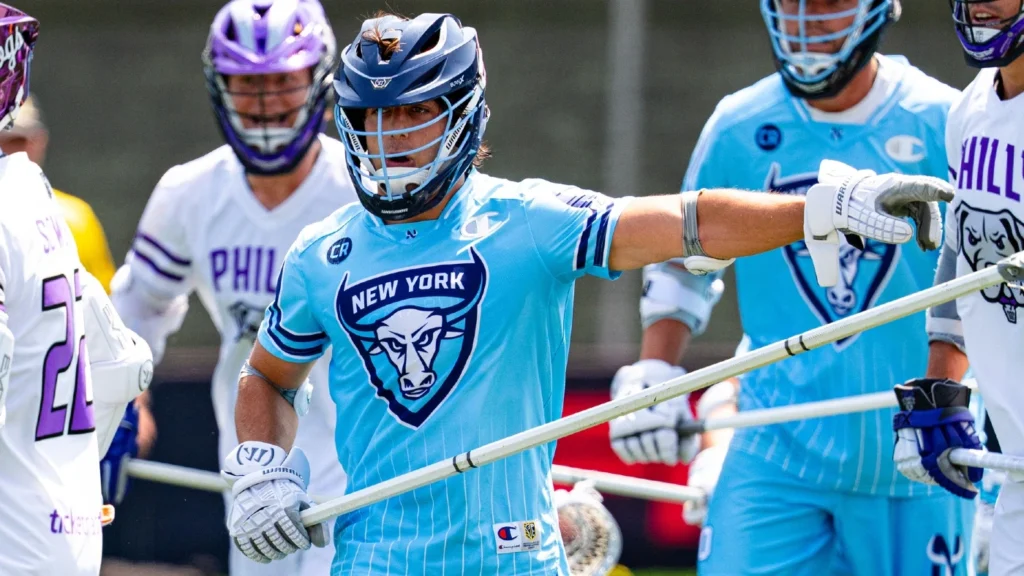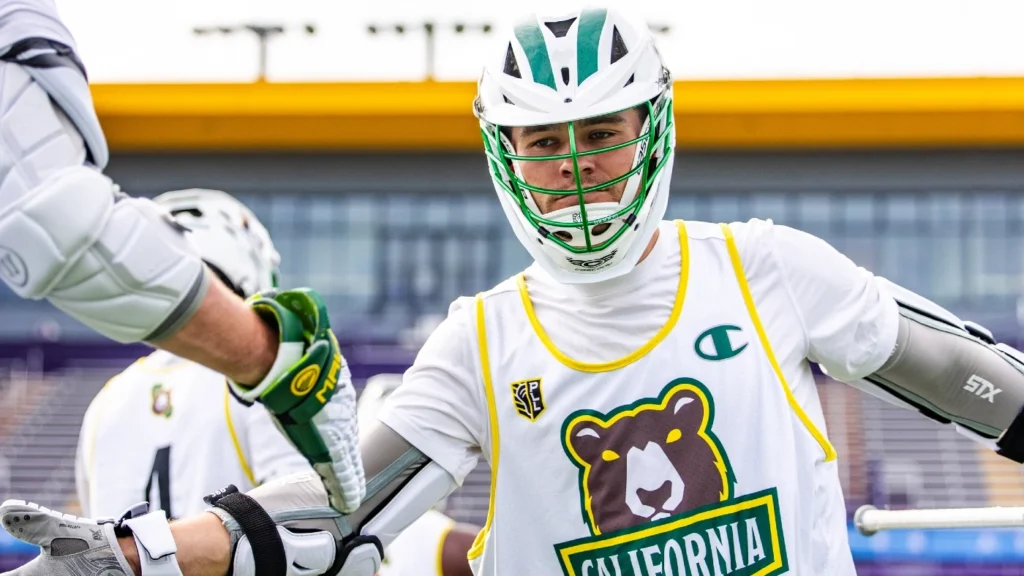Growing up, Chris Kavanagh and his family would frequently visit his older brother, Matt, at Notre Dame, and they would drive. The trip from Rockville Center, N.Y., to South Bend, Ind., is about 730 miles and takes a little over 11 hours, which meant Chris had a lot of time on his hands.
That didn’t bother him, though. Kavanagh said he liked having alone time, and he enjoyed being creative, so those long drives were the best time for him to practice his self-taught hobby of stringing lacrosse sticks.
More than a decade later, Kavanagh has worked to perfect the craft; he has his own Instagram account to showcase his work and is now one of two “stick doctors” – along with fellow rookie Andrew McAdorey – on the California Redwoods.
“When I’m watching kids play knowing they got their sticks strung by me is pretty exciting and rewarding,” Kavanagh said. “When guys are sticking corners and zipping passes around with my stick, it’s really cool. The stick’s very important in the sport of lacrosse, so if you have an accurate, efficient stick, strung by a certain guy – which would happen to be me – it’s really cool.”
Kavanagh learned to string sticks at an early age. He would watch East Coast Dyes and StringKing YouTube videos. He said he wasn’t strong enough at first to tie things tight enough, so his sticks were loose in the channels and weren’t accurate. But his love for lacrosse made him keep trying and chasing perfection.
As he improved, his customer base started growing; he started by stringing sticks for his brothers Matt, Brendan and Pat, who would tell kids at lacrosse tournaments. Kavanagh then would string his friends’ sticks, and word continued to spread across town. He would charge for his services initially – he saved most of his money but would use some to get food with friends or go to the candy store – but when he got to Notre Dame, he wouldn’t formally charge his teammates; he just asked they pick up the tab at lunch or something similar. He said his favorite players to string for have been his brother Pat and Eric Dobson.
He even strung a stick for Pat before their matchup against each other in the first game of the season.
“That was a funny conversation,” Kavanagh said, laughing, “just joking about me cutting his mesh out or loosening it up to make him play bad, but I wouldn’t do that.”
McAdorey got his first lacrosse stick when he was 3 years old, and he started learning to string sticks when he was in middle school. He would hang out at Port Jeff Sports near his Long Island hometown, where Antonio Masone worked. Masone said if McAdorey was going to be playing seriously, he should learn to string his own sticks and started teaching him. McAdorey would look up pictures on the Internet of his favorite players and the sticks they were using and try to replicate them.
Much like Kavanagh, it took McAdorey a few years to have the confidence to use the sticks he strung. He said even now, as improved as he is, he still gets frustrated if his stick isn’t throwing the way he wants and has to take the mesh out and start from scratch.
He said he enjoyed lacrosse and everything associated with it, so it never was a burden to learn how to do it. Now, while his roommates are watching a movie, he’ll sit on the couch and string a stick.
It’s a discipline that’s taught him some important values.
“It takes time,” he said. “It takes patience in order to perfect the stick you’re using and you really like.”
McAdorey spends a lot of time working on his sticks. He knows one is strung to his liking when he can “feel the ball click off the nylon.”
“When you do figure it out, after stringing a stick for a long time and restarting if you don’t like it, and you finally do find that click, it’s a really good feeling,” he said. “It’s a really satisfying feeling knowing you put a lot of time into it and you can play your best lacrosse because you’re confident in the stick you’re using.”
Since joining the Redwoods, Kavanagh and McAdorey have combined to string a number of sticks for their teammates. Kavanagh worked on sticks for Ryder Garnsey, Nakeie Montgomery, TD Ierlan and Jared Conners. McAdorey flies a little more under the radar and had only strung a stick for Aidan Danenza, his teammate since the third grade.




